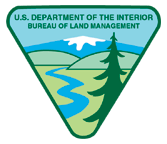
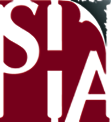
About This Site
Caveats,
Acknowledgements & Miscellaneous
  About This Site |
| Main Subject Pages |
| Home |
| Dating |
| Typing/Shapes |
|
Glassmaking ▪Makers Marks |
| Colors |
| Finishes & Closures |
| Body & Seams |
| Bases |
| Fragment ID |
| Glossary |
| References |
| Links |
| FAQ's |
| About this site |
| Website Map |
HOME: About This Site
INTRODUCTION
As noted on the Homepage, this website has been prepared to assist archaeologists with the dating, identification and classification of historic bottles and bottle fragments located during cultural surveys and excavations. This site has also been designed to be of utility to the general inquisitive public in helping them date and identify bottles they have questions about. As this has been, in part, a publicly sponsored website this is also an appropriate goal. (See FAQ's for more information.)
Caveats:
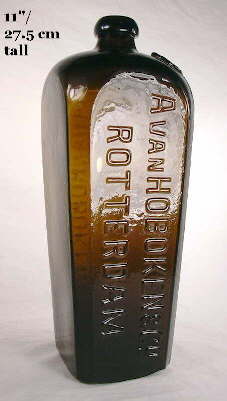 1. The primary intent of this website
is to discuss the historical and manufacturing details of glass bottles produced in the United
States - and to some extent Canada - from the late 1700s to the mid-20th
century. This site does not attempt to
comprehensively discuss foreign-made glass bottles although there were numerous parallels in
other parts of the world in regards to the timing and use of the manufacturing techniques discussed on this site
which are the basis for the dating parameters.
1. The primary intent of this website
is to discuss the historical and manufacturing details of glass bottles produced in the United
States - and to some extent Canada - from the late 1700s to the mid-20th
century. This site does not attempt to
comprehensively discuss foreign-made glass bottles although there were numerous parallels in
other parts of the world in regards to the timing and use of the manufacturing techniques discussed on this site
which are the basis for the dating parameters.
Since foreign made bottles are commonly encountered on historic sites in the United States (and Canada) some typical/common foreign bottles are pictured and described on this site. For example, the case gin bottle pictured to the right dates from the late 19th century, originated in Holland, and is commonly found on North American historic sites as well as in many other parts of the world. (This particular example was acquired in Malaysia by the authors brother Randal Lindsey.) The need to keep this website reasonable in size and to concentrate on the historic bottles which are most common in the U. S. forces this narrowing of scope, as well as the fact that information on foreign glassmaking is much less available to the author.
2. This website does not discuss the monetary value of historic bottles nor generally the rarity of items as its purpose is educational, concentrating primarily on the goals noted on the Homepage of historic bottle dating and identification (i.e., typology).
Rarity and value are loosely connected attributes; viewers need to consult the plethora of collector based books and websites for this type information. Rarity is occasionally discussed on this site within the context of the probability of items being found during cultural surveys and as it relates to dates of manufacture, e.g., rare items were usually produced for a short period of time and commonly encountered bottles for a lengthy period.
3. The information presented on this website does not represent the specific views or policies of the Society for Historical Archaeology (SHA) or the Bureau of Land Management (BLM).
The information within this website is believed to be as properly researched, accurate, and reliable as the currently available literature allows, though there is much currently unknown about this complex subject. Much is simply lost to history. Ultimately the information presented here represents the views and opinions of the author of this site who accepts full responsibility for content and quality.
Historic Bottle Website Author, Designer & Content Manager
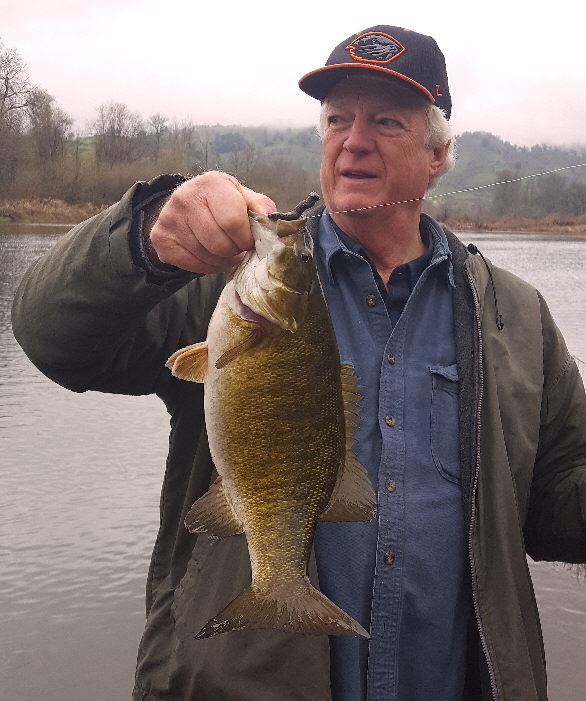 This
Historic Glass Bottle Identification and
Information Website was - and continues to be - prepared and
maintained by
Bill Lindsey, Rangeland Management Specialist (retired) with the BLM in Klamath Falls, Oregon, with encouragement and sometimes
assistance from those noted below. As the
author, designer, and content
manager of this site, I take sole responsibility for all errors, omissions, shortcomings
- and hopefully the good stuff also - found within these pages.
I have tried very hard to make this site as accurate and reliable as
possible, though it is inevitable that some will disagree with some of the
interpretations and information, and that there will be some errors.
Although I have a decent working knowledge of computers and web page
basics, I am still a rank novice in that field. These pages were
initially prepared
using
Microsoft's FrontPage 2002™ and more recently its replacement - Office SharePoint
Designer™. I've tried to make the
pages consistent, workable,
simple (as possible), and esthetically appealing but what is important to me is the
content. I ask the user to please forgive my idiosyncrasies and novice
web design features as well as the coding weirdness's that may exhibit
themselves in different browsers.
This
Historic Glass Bottle Identification and
Information Website was - and continues to be - prepared and
maintained by
Bill Lindsey, Rangeland Management Specialist (retired) with the BLM in Klamath Falls, Oregon, with encouragement and sometimes
assistance from those noted below. As the
author, designer, and content
manager of this site, I take sole responsibility for all errors, omissions, shortcomings
- and hopefully the good stuff also - found within these pages.
I have tried very hard to make this site as accurate and reliable as
possible, though it is inevitable that some will disagree with some of the
interpretations and information, and that there will be some errors.
Although I have a decent working knowledge of computers and web page
basics, I am still a rank novice in that field. These pages were
initially prepared
using
Microsoft's FrontPage 2002™ and more recently its replacement - Office SharePoint
Designer™. I've tried to make the
pages consistent, workable,
simple (as possible), and esthetically appealing but what is important to me is the
content. I ask the user to please forgive my idiosyncrasies and novice
web design features as well as the coding weirdness's that may exhibit
themselves in different browsers.
I am open to all articulate questions, comments, and verifiable corrections about content and suggestions about the website structure and design. These can be directed to me at the email link that is noted in FAQ #21 and at the bottom of this page.
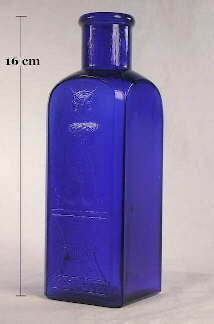 If
you are asking yourself why a BLM Rangeland Management Specialist (Oregon
State University - B.S. in Rangeland Resource Mgmt., 1979) is the developer
and content manager for what is actually an historical archaeology related
site - and outside his apparent field of expertise - you've asked a valid
question. I've been a collector of historic bottles since I was a
teenager (52+ years!) although that can mean something or nothing depending on what I did
with my time. To that question, I have been an avid avocational
student of historic bottle dating and identification for most of that time.
I have assisted many archaeologists with bottle identification in my 30
years with the BLM and aided the late John Thomas with research on several
of his highly respected publications dealing with Western liquor bottles.
I also continue to assist with an ongoing series on glass maker history and makers marks
which was originally carried in the Federation of Historic Bottle Collectors (FOHBC)
publication Bottles and Extra's although it is now being published on
this website as the Encyclopedia of a
Manufacturer's Marks on Historic Bottles via the
Bottle & Glass Maker's Markings page on this website.
If
you are asking yourself why a BLM Rangeland Management Specialist (Oregon
State University - B.S. in Rangeland Resource Mgmt., 1979) is the developer
and content manager for what is actually an historical archaeology related
site - and outside his apparent field of expertise - you've asked a valid
question. I've been a collector of historic bottles since I was a
teenager (52+ years!) although that can mean something or nothing depending on what I did
with my time. To that question, I have been an avid avocational
student of historic bottle dating and identification for most of that time.
I have assisted many archaeologists with bottle identification in my 30
years with the BLM and aided the late John Thomas with research on several
of his highly respected publications dealing with Western liquor bottles.
I also continue to assist with an ongoing series on glass maker history and makers marks
which was originally carried in the Federation of Historic Bottle Collectors (FOHBC)
publication Bottles and Extra's although it is now being published on
this website as the Encyclopedia of a
Manufacturer's Marks on Historic Bottles via the
Bottle & Glass Maker's Markings page on this website.
While actively employed, this website was a collateral "special project" in addition to my regular duties in the public rangeland administration/management world. I have expended even more of my own time and expense on creating this website - work which will continue indefinitely in retirement. It has all been well worth it considering the amount of use the site receives from all types of people around the world and the (March 2007) inclusion of my website within the Society for Historical Archaeology website. Look at the pages within this website and judge for yourself as to its utility, legitimacy, and value. As the list of involved individuals below and the References page indicates, this website was not prepared in a vacuum.
Acknowledgements
|
Bottle Makers and Their Marks by Julian H. Toulouse (1971) is a true "classic" in the field of bottle dating and determining manufacturing origin. It is reference works like this that helped build the foundation for this website. |
These web pages are a brief composite of an immense amount of previous work done on the subject of historical glass bottle dating and identification over the past half century - like Dr. Julian Toulouse's' classic 1971 book pictured to the right. There is no way that all may be thanked or given the proper credit for their pioneering work in this field, though all of the published sources and references used in the preparation of this site are noted on the Reference Sources & Bibliography page.
A special thanks must first go to Bill Lockhart, Professor (retired), New Mexico State University at Alamogordo, NM. Bill is the author of many different historic bottle "e-books" (now hosted by this website; see the Links page) as well as a plethora of other publications in and out of the field of historic bottles. He has acted as a volunteer consultant in providing input and review into portions of this website. He has also contributed scores of research articles to the field of glassmakers and their markings, all of which are linked to the website as printable "pdf" files; see the Bottle & Glassmakers Markings and/or Reference Sources & Bibliography pages. He is also the driving force behind the Encyclopedia of a Manufacturer's Marks on Historic Bottles noted above which is also hosted on this website. Bill will continue to be actively involved in this website into the future with a special emphasis in the fields of bottle makers marks, 20th century glass manufacturing in general, as well as soda, milk, and beer bottles. His encouragement and support from the beginning has and continues to be most appreciated.
Bill is also a guiding light in our very active Bottle Research Group (BRG) which is pursuing many different avenues in the world of bottle makers marks, history and glass making technology. The BRG currently consists of Bill Lockhart, Carol Serr (Archaeologist, Laguna Mountain Environmental, Inc., San Diego, CA.), Bernard ("Beau") Schriever (Archaeologist, Colorado), Bob Brown (collector, researcher, California) and myself with occasional input from David Whitten (collector & glassmaking historian, Clarksville, IN.) and others as listed in the periodical and journal articles section of the Reference Sources & Bibliography page. Many bits of information that enhance the depth and detail of this website are the direct result of the constant discussions between the group members, though this discourse is also assisted greatly by the kindly input and questions from scores of others outside the BRG who constantly catalyze new discussions or rejuvenate old ones. The BRG has been and continues to be the primary consulting experts that the website author relies most heavily on.
A big THANK YOU must also be extended to the late Dr. Peter Schulz (ex-Senior Archaeologist, California State Parks, Sacramento, CA.), Dr. Rebecca Allen, Dr. Kelly Dixon, and Dr. Chris Merritt of the Society for Historical Archaeology (SHA) for so graciously and efficiently facilitating the move of the Historic Bottle Website (HBW) to the SHA servers in March 2007 and where it is envisioned to reside indefinitely. Incorporation of the HBW into the SHA website has been a major milestone for the HBW paving the way for continued enhancement and additions by the author in retirement.
Special thanks must also be extended to Peggy Corson (CorsonArt@aol.com) for the exceptional professional illustrations which are scattered throughout this site. Her dedication and flexibility in preparing the necessary art in the form of many high quality illustrations was beyond the normal call of duty. Thanks Peggy!
...and last, but not least, much thanks must go to my wife Kathy Lindsey (now retired writer/editor/planner with the BLM, Klamath Falls, OR.) who was and continues to be the editor of this large website and test subject for the clarity and utility of the information contained herein. Much gratitude is also expressed for her pleasant and cheerful forbearance of the significant change to our lives that my pursuit of this project has induced upon us for many years now.
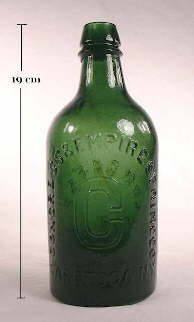 In addition, the following individuals (in
alphabetical order) assisted with the preparation of this website in some
fashion with review, critiques, suggestions, information, encouragement, etc. Their input was invaluable:
In addition, the following individuals (in
alphabetical order) assisted with the preparation of this website in some
fashion with review, critiques, suggestions, information, encouragement, etc. Their input was invaluable:
-Allen Agnew, Web Manager (retired), BLM, Oregon State
Office, Portland, OR.
-Dr. Tim Canaday, Archaeologist, BLM (now with the USFS)
-Barbara Ditman, Supervisory Natural Resource Specialist (retired),
BLM, Klamath Falls, OR.
-Beth Gustas, BLM Web Publisher, NSTC, Denver, CO.
-Richard Hanes, Archaeologist (retired?), BLM, Oregon State Office, Portland, OR.
-Sarah Johnston, Archaeologist (retired), U. S. Forest Service,
Fresno, CA.
-Dr. Cecil Munsey, Author & educator (retired), Poway, CA.
-Dr. Gordon Pollard, Professor, Department of Anthropology, State University of New York,
College at Plattsburg, NY.
-Teri Raml, Field Manager, BLM, Phoenix Field Office, Phoenix, AZ.
-Dr. Allen Vegotsky, Atlanta, Georgia
-Dale Wedel, Archaeology Specialist, Office of the Wyoming State
Archaeologist, Laramie, WY.
...and some acknowledgement is in order to a couple people I've never met (though have corresponded with) but whom were important to the (eventual) creation of this website.
I would like to acknowledge Ronald Deiss (now an archaeologist, Army Corp of Engineers, Rock Island, IL.) who's 1981 Master's Thesis entitled "The Development and Application of a Chronology for American Glass" provided a spark for the eventual pursuit of this project though I didn't know it at the time I originally read his thesis (1982). This was long before the World Wide Web really existed as the incredible public information forum that it is today.
I would also like to acknowledge the contributions of Richard Fike, retired BLM archaeologist who, though not involved with this website, was a pioneer in the field of bottle identification and dating and its practical applications in federal land management activities.
I would also like to thank my various BLM supervisors, managers, and web managers for allowing me the privilege to take on this project and facilitating its original placement on the internet.
|
One final thought.... |
If you can't find the information or answer you are
looking for within these website pages, send an email to the author via:
questions@historicbottles.com
I'll try to help you if I can, though it may take a while to answer
depending on my other projects of the moment. Being retired doesn't mean I
have endless time! I may also forward questions on to those who
may be more knowledge about the subject inquired about and have expressed a
willingness to receive such queries.
Return to the top of this page.
SEARCHING THIS WEBSITE:
To do a word/phrase
or image search of this website
one must use the following Google search link:
Search the SHA/BLM Historic Glass Bottle Identification & Information
Website
(Note: Search results for this website will be just below the
final top-of-the-page Google paid ads.)
1/1/2024
This website created and managed by:
Bill Lindsey
Bureau of Land Management (retired) -
Klamath Falls, Oregon
Questions? See
FAQ #21.
Copyright © 2024 Bill Lindsey. All rights reserved. Viewers are encouraged, for personal or classroom use, to download limited copies of posted material. No material may be copied for commercial purposes. Author reserves the right to update this information as appropriate.